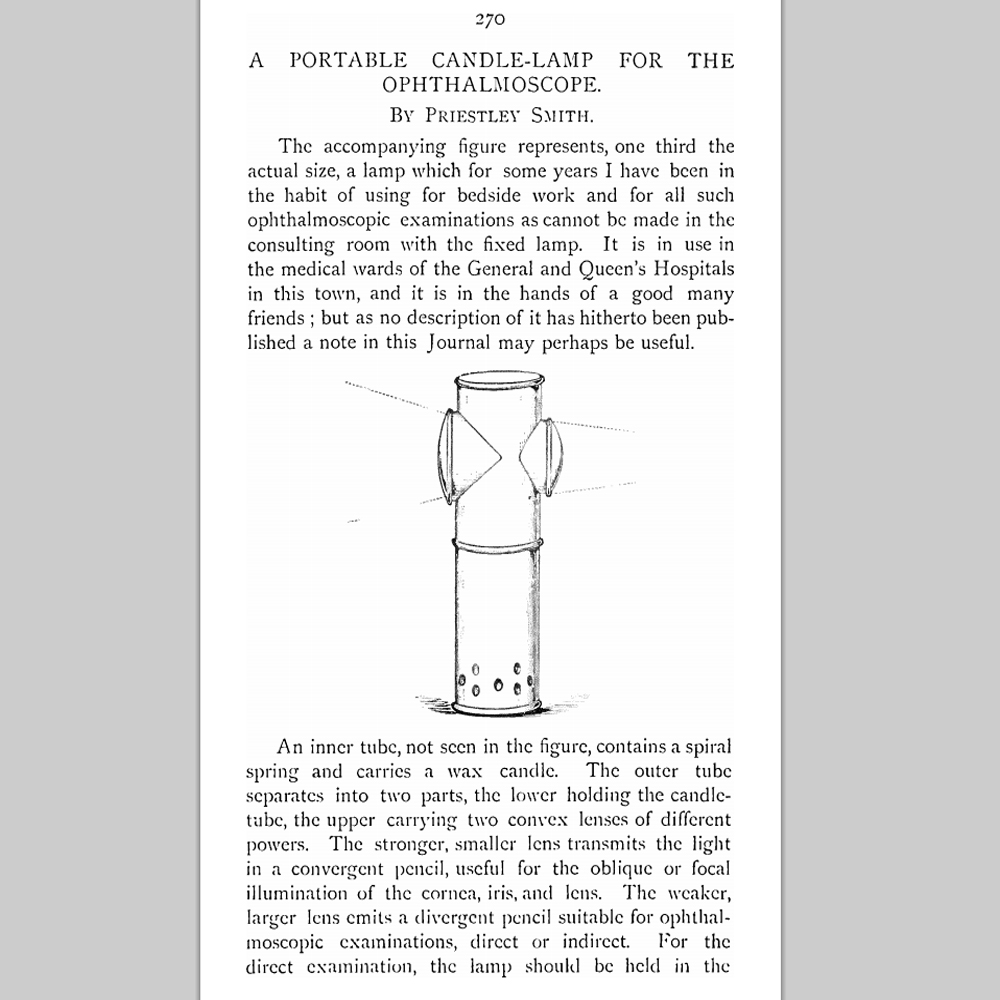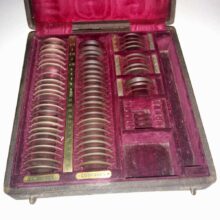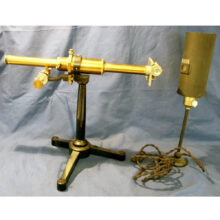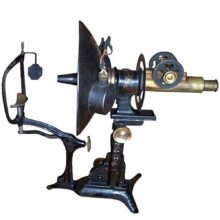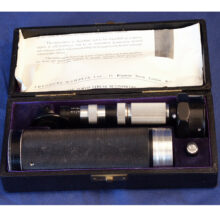Priestley Smith candle lamp 1884
Priestley-Smith candle lamp is about 7 inches or 18 cm tall and is very rare today.
Its widths are 3 ¼ inch at the lens level, about 1 ¾ inches at the column level and 2 ½ inches at the base. It weighs about one pound or 450 grams. The lamp is made of steel and comes in 3 main parts
The base has air holes and contains an internal metal sleeve. The metal sleeve is accessed through a rotating cover at the bottom. Inside the steel sleeve is a spring whose purpose is to push the melting candle to the top of the sleeve in order to maintain the flame at the level of the lenses.
The main column has an open top for the flame exhaust to escape and it has two glass lenses which can be changed by unscrewing their covers.
The two lenses consist of one which is about 20 diopters of plus power and the other, which is a plano lens (no power).
There is a white candle inside whose wick is about 5 cm from the convex lens. This location results in a more focused beam of light with approximately parallel rays. This would be analogous to the headlights of a car or the beam of a flashlight except those use parabolic concave mirrors to achieve this end.
The lamp was invented by Joseph Priestley Smith, a British ophthalmologist (1845 – 1933) in 1884.
(The Ophthalmic Review, 1884, vol. 3, pp. 270-271)
Candles and oil would eventually be replaced by electricity as the source of illumination for examining the eye.













